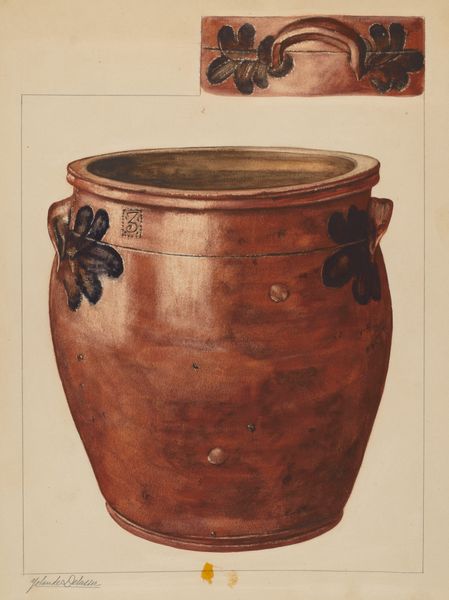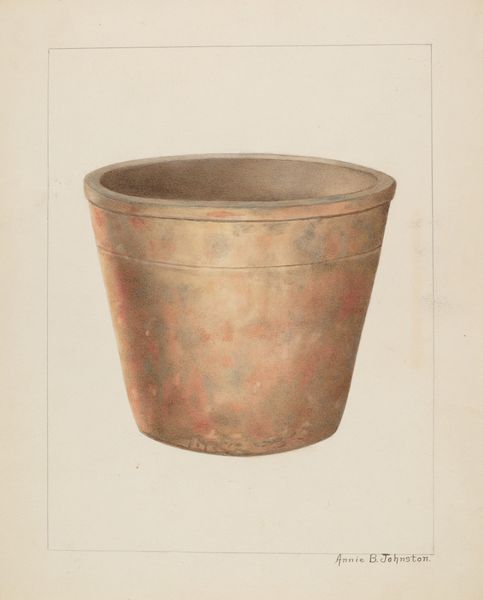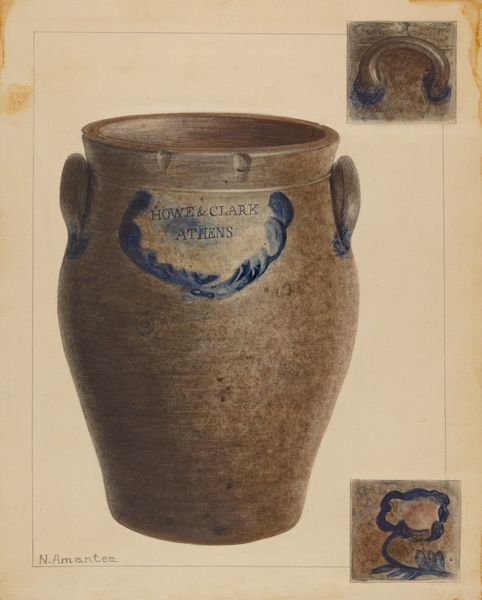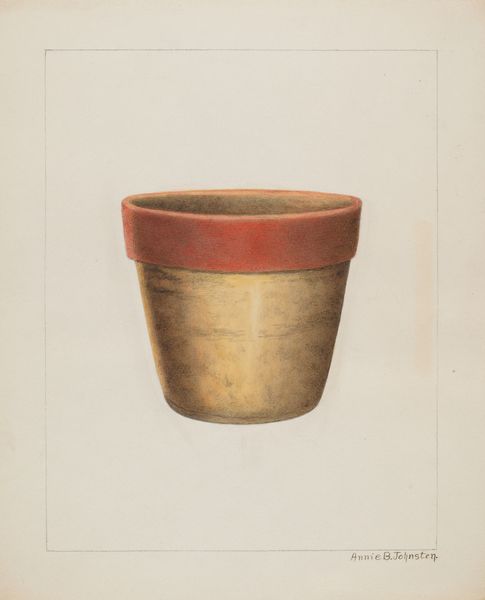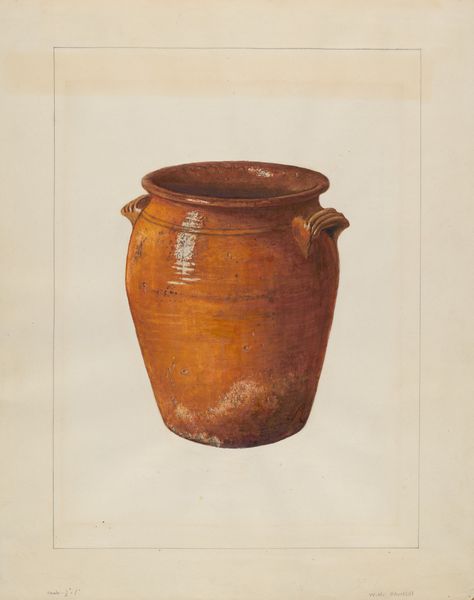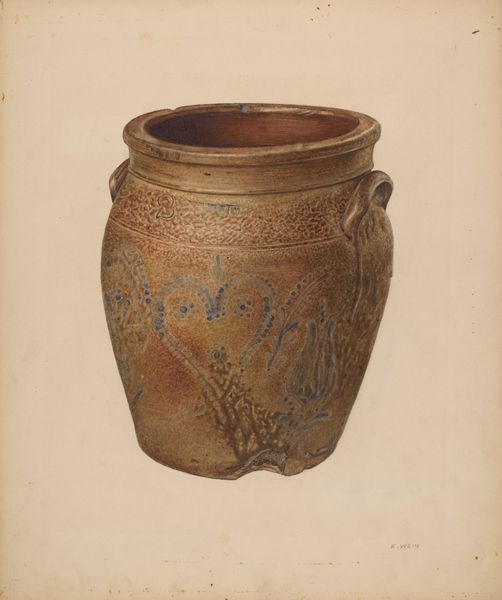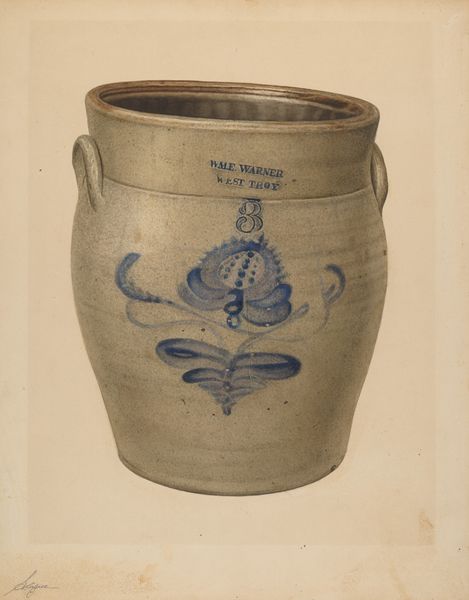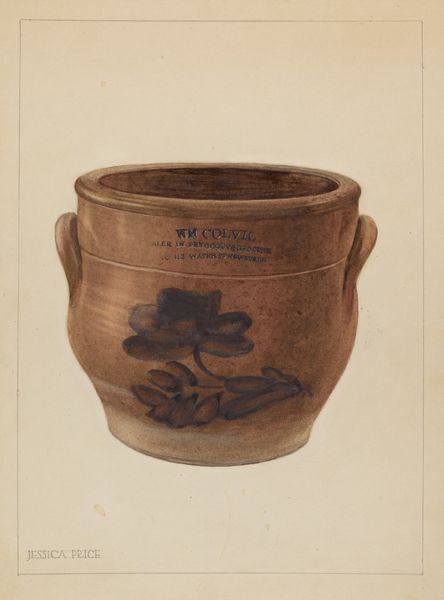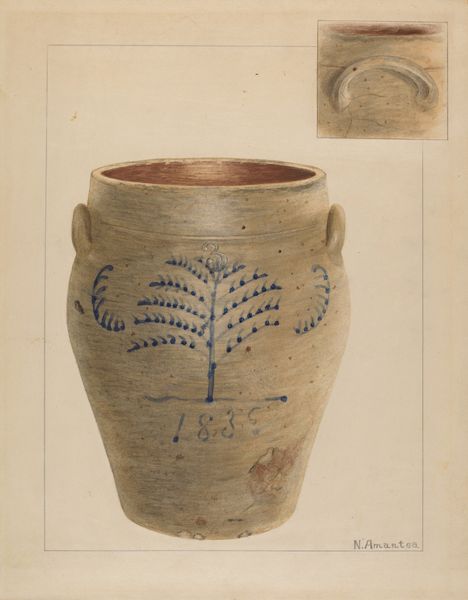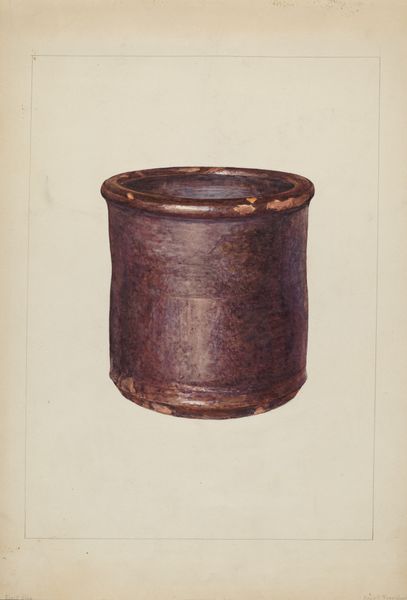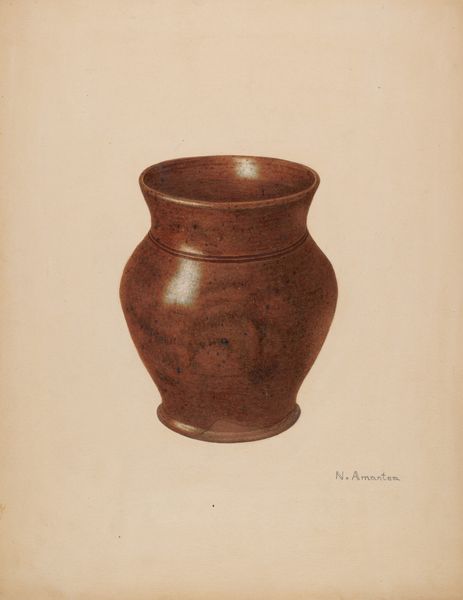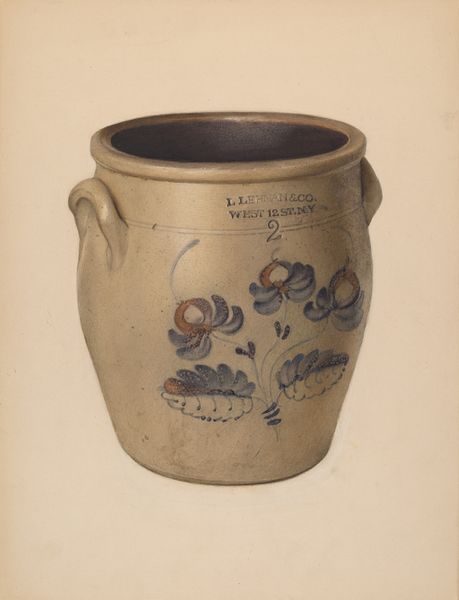
drawing, watercolor
#
drawing
#
watercolor
#
academic-art
#
realism
Dimensions: overall: 29 x 22.8 cm (11 7/16 x 9 in.) Original IAD Object: 11 1/4" High 10 1/4" Dia(top) 7 3/4" Dia(base)
Copyright: National Gallery of Art: CC0 1.0
Curator: Let's explore Nicholas Amantea's "Crock," dating back to around 1937. It’s rendered in watercolor and drawing, an understated combination. Editor: I'm struck by the weightiness of it. It feels like it could hold something substantial, not just physically but maybe also emotionally, like a repository of stories or memories. Curator: The representation of the crock invites contemplation of labor and class, revealing how domestic objects embody societal narratives and historical class structures. This work pushes against dominant cultural representations. Editor: You see that so clearly. For me, I get pulled into the textural quality. Amantea has created the visual essence of earthenware: earthy, solid, and humbly beautiful. It's simple yet resonant. Curator: We need to look at this drawing's production era. Art during the Great Depression took different paths. This is, possibly, related to the need of representing the common, giving worth to everyday objects and activities, and not glorious feats of heroes. The artist calls the viewer to recognize themselves reflected in them. Editor: Maybe this simple form held comfort and reliability. Did this simplicity allow people a connection with beauty amidst scarcity? Also, it's an amazing lesson in observing the nuance of shadow and light! I have never realized how much an old-looking jar would convey in one picture. Curator: Yes! Through that lens, the artwork prompts us to consider our contemporary relationship with material culture, consumption, and disposability in opposition to reuse. Editor: So beautifully put. Looking closely and discussing objects, even a simple "Crock," reveals just how rich our connection to the everyday world can be. Curator: I think this makes visible that we are surrounded by these "silent witnesses." Editor: That is indeed something that stayed with me; the silence and depth in it.
Comments
No comments
Be the first to comment and join the conversation on the ultimate creative platform.
